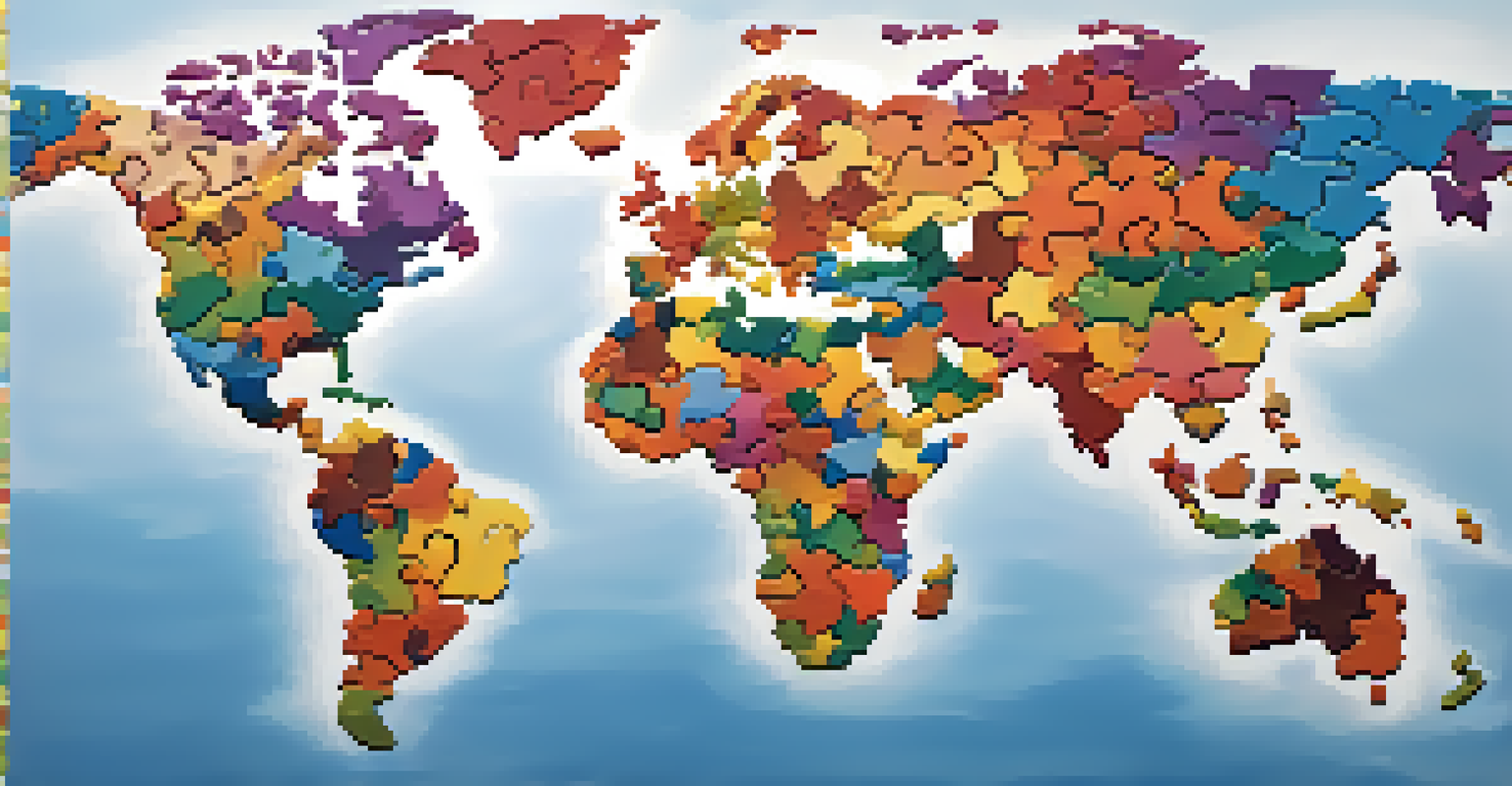Understanding Cultural Dimensions in Team Management

What Are Cultural Dimensions in Team Management?
Cultural dimensions are frameworks that help us understand how culture influences behavior and values within teams. At the core, they provide insights into differences in communication styles, decision-making processes, and conflict resolution strategies among team members from diverse backgrounds. By grasping these dimensions, managers can better navigate the complexities of multicultural teams.
Diversity and inclusivity are not just buzzwords; they are essential for fostering innovation and creativity in a team.
For instance, consider Hofstede's cultural dimensions, which include aspects like individualism versus collectivism. In individualistic cultures, people prioritize personal goals, whereas collectivist cultures emphasize group harmony. Recognizing these differences can lead to more effective collaboration and help prevent misunderstandings.
Ultimately, understanding cultural dimensions is crucial for creating an inclusive environment where all team members feel valued and heard. This awareness not only enhances team cohesion but also drives innovation by leveraging diverse perspectives.
The Importance of Cultural Awareness in Teams
Cultural awareness lays the foundation for successful teamwork in a diverse environment. When team members understand each other's cultural backgrounds, they are more likely to communicate effectively and collaborate seamlessly. This understanding fosters trust and reduces the likelihood of conflicts arising from misinterpretations.

For example, a team with members from both high-context and low-context cultures may face challenges in communication. High-context cultures rely on implicit messages and non-verbal cues, while low-context cultures prefer direct communication. Recognizing these differences can help teams bridge communication gaps and work more harmoniously.
Cultural Dimensions Enhance Teamwork
Understanding cultural dimensions helps managers navigate communication styles and decision-making processes in diverse teams.
By promoting cultural awareness, organizations can create a supportive atmosphere that encourages open dialogue and collaboration. This not only boosts team morale but also enhances overall productivity and innovation.
Key Cultural Dimensions to Consider
Several key cultural dimensions can significantly impact team dynamics. Dimensions such as power distance, uncertainty avoidance, and masculinity versus femininity help to illuminate how individuals from different cultures perceive authority, risk, and gender roles within the workplace. Understanding these dimensions is vital for effective team management.
The strength of the team is each individual member. The strength of each member is the team.
For instance, in cultures with high power distance, hierarchical structures are prevalent, and decisions may come from the top down. Conversely, low power distance cultures encourage egalitarian relationships, where input from all team members is valued. Recognizing where your team members fall on this spectrum can help you tailor your management style accordingly.
By being mindful of these cultural dimensions, managers can foster an inclusive environment where all team members feel empowered to contribute. This adaptability can lead to more effective decision-making and a stronger, more cohesive team.
Adapting Communication Styles Across Cultures
Effective communication is at the heart of successful team management, especially in multicultural settings. Different cultures have varying communication styles, ranging from direct to indirect, which can lead to misunderstandings if not addressed. Adapting your communication style is essential for fostering collaboration among diverse team members.
For example, in a team with both direct and indirect communicators, a manager might need to find a middle ground. Direct communicators typically prefer straightforward, unambiguous language, while indirect communicators may rely more on context and nuance. By being aware of these differences, managers can adjust their communication approach to suit the needs of their team.
Trust is Key in Multicultural Teams
Building trust among team members from different cultures fosters better collaboration and enhances team performance.
Encouraging open discussions about communication preferences can also help create a more inclusive atmosphere. This dialogue can empower team members to express their thoughts and ideas more freely, ultimately enhancing team performance.
Navigating Conflict Resolution in Diverse Teams
Conflict is a natural part of teamwork, but managing it effectively becomes more complex in culturally diverse teams. Different cultures have unique approaches to conflict resolution, influenced by their values and communication styles. Understanding these differences is crucial for effective management.
In some cultures, avoiding confrontation is preferred, while others may embrace directness and assertiveness. For instance, a team member from a collectivist culture might prioritize maintaining harmony, leading them to avoid direct conflict. In contrast, someone from a more individualistic culture may feel comfortable addressing issues head-on. Recognizing these tendencies can help managers mediate conflicts more effectively.
By fostering a collaborative environment that respects diverse conflict resolution styles, managers can encourage constructive discussions and find solutions that work for everyone involved. This approach not only resolves conflicts but also strengthens team bonds.
Building Trust in Multicultural Teams
Trust is a fundamental element of any successful team, and it's particularly important in multicultural settings. Building trust across diverse cultures requires an understanding of different norms and expectations regarding relationships and communication. Managers play a key role in nurturing this trust.
For example, some cultures prioritize relationship-building before engaging in business discussions, while others may focus on task completion first. A manager who recognizes these differences can create opportunities for team members to connect on a personal level, fostering a sense of camaraderie.
Adapt Communication for Inclusivity
Adapting communication styles to accommodate cultural differences promotes effective collaboration and reduces misunderstandings.
Trust is not built overnight; it takes time and consistent effort. By encouraging team-building activities and open communication, managers can help cultivate an environment where trust flourishes, enabling teams to work more effectively together.
Strategies for Effective Team Management Across Cultures
Implementing effective strategies for team management across cultures can significantly enhance team performance. One key strategy is to establish clear expectations and guidelines that account for cultural differences. This clarity helps team members understand their roles and responsibilities, reducing confusion.
Training sessions on cultural sensitivity can also be beneficial. By educating team members about different cultural dimensions and communication styles, managers can promote a more inclusive work environment. This training not only enhances awareness but also equips team members with the tools they need to navigate cultural differences.

Another effective strategy is to encourage collaboration through diverse teams. By bringing together individuals from various backgrounds, organizations can leverage a broader range of perspectives and ideas. This not only drives innovation but also fosters a deeper understanding of cultural dimensions within the team.